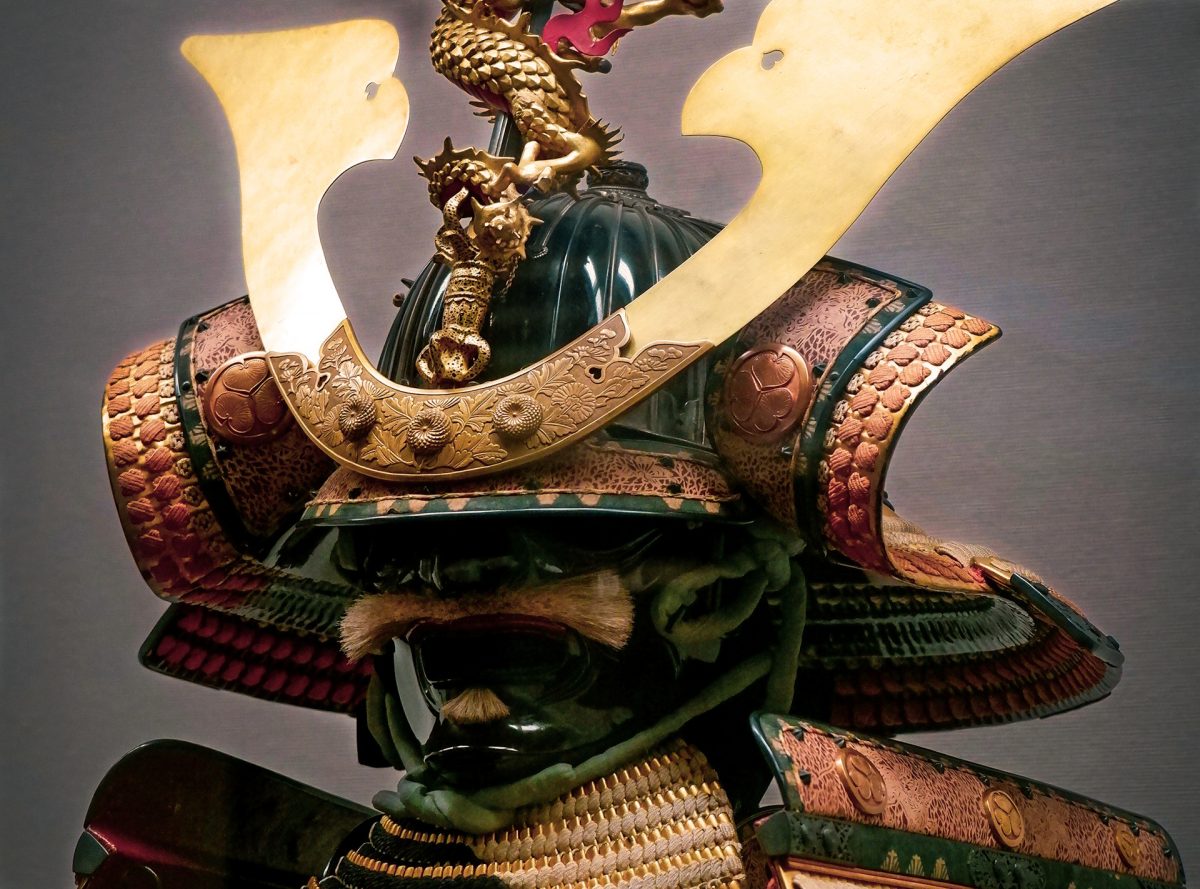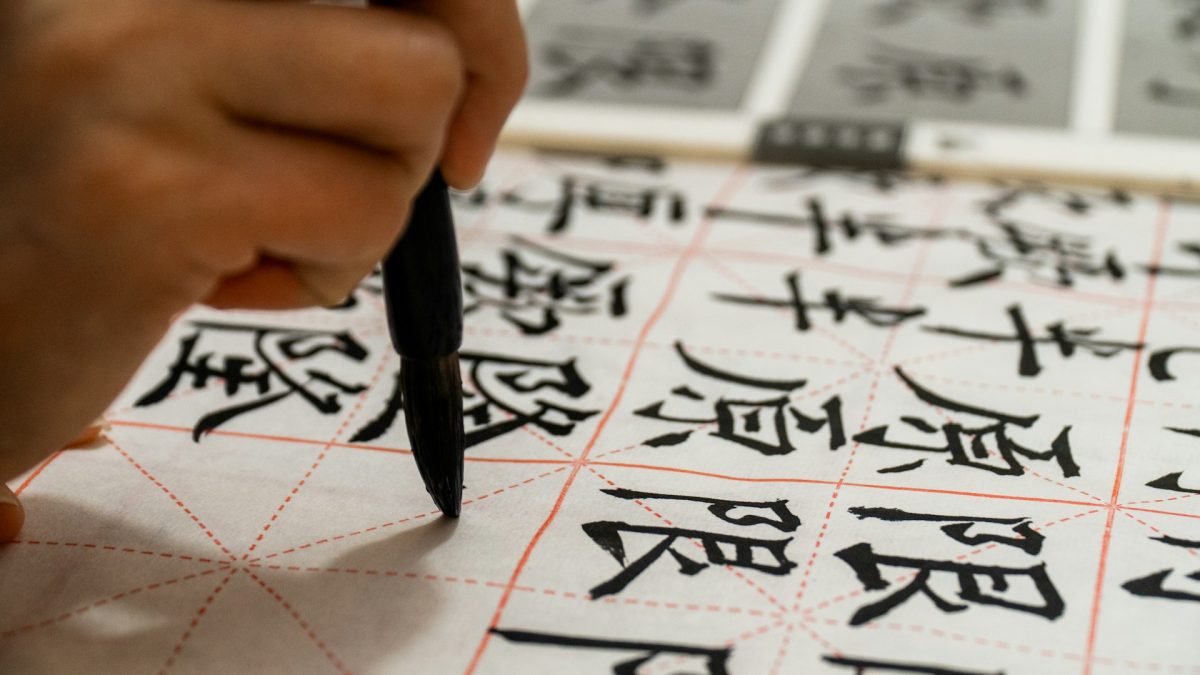
You might find it difficult to sell your product or service in Japan using English only, because in Japan the only language that really counts is Japanese. English is a subject that is studied in school, but seldom actually used in real life. Read this blog post for some interesting examples of English in Japan.
In Japan, one of the world’s leading industrial nations, English is taught in school from elementary to college. So one might expect that the Japanese population would be fairly proficient in English. But when you take a closer look, it becomes clear that English in Japan is peripheral, decorative, subordinate, and perhaps a source of (hopefully) interesting blog posts but not much more. Here’s why.
Understand the purpose of English in Japan
To most Japanese people, English is something you study, not something you use. English is a subject that Japanese middle schoolers study for their high school entrance exams, and high schoolers study for their college entrance exams. In fact, this system of “English for the sake of exams” has given rise to what’s called 受験英語 (Juken eigo, Exam English), which has been described as English that is “specifically employed in entrance examinations and has — in some cases — no other practical application.”
To be fair, the Japanese education system is trying to upgrade to a more comprehensive English education and testing system that is more relevant to real life, with the goal of making the population more globally competitive, but changes come slowly.
Aside from English for study, there are English-sounding loan words that have made their way into the Japanese language, but chances are that they are of the so-called Janglish variety, and are not truly English. You might want to check out our separate blog post on that phenomenon.
English as decoration (because it looks cool)
If you ever visit Japan, you will notice English words all around — on everything from road signs to clothing. And some of it will blow you away. How about a T-shirt that says “THINK LESS. STUPID MORE.” or something even more inappropriate. Instead of going into detail here, check out this article on the MTV Japan website (it’s in Japanese, but the pictures are what matters) for great examples of English as decoration.
But hey, T-shirts are like the canvas of modern society, right? Designers are free to get wacky there. Problem is, the people wearing those shirts are often clueless to what the text means. So when a Japanese local proudly declares “I feel happiness when I eat a potato” on his shirt without knowing, visiting tourists have little choice but to chuckle.
Funny English isn’t limited to T-shirts, it’s all over the place. So maybe you’d like to replace your Name Card with a Name Cade, use a Brash Pen, order a HumBarger for Derivery, and of course wipe your hands with a Shilky Touch.
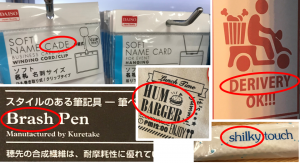
But then again, if you can wait until Valentin’s day, you might try the Meat Roaf and Wei Bwurst (instead of Weißwurst) with Chedder Cheese.
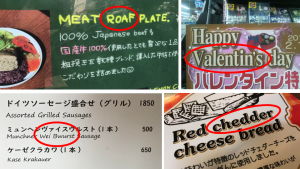
Of course all of these are examples of errors that could have been avoided with a little proofreading, which can be accomplished by cracking open a dictionary, typing into Word and paying attention to the redlining, or in this day and age, Googling it. Sadly, mistakes make their way into menus, products and packages. Why? Because the English (or French or German) is non-essential and serves mainly a decorative purpose. Japanese consumers, who otherwise are extremely demanding in terms of linguistic quality, pay little attention to the quality of English (or whatever) as long as it looks nice and foreign.
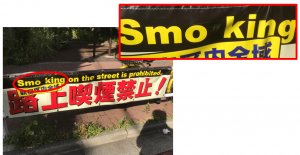
If you’re ever in town, you should know that “Smo king on the street is prohibited” in Tokyo. Smo? King? Wow. So if you’re pretty much convinced by now that English is not a viable marketing language in Japan, then, it’s a wrap!
But if you’d like some insight into what’s behind the “Smo king” phenomenon, continue reading.
A closer look at the banner shows a lower case “r” thatʼs been blacked out with magic marker. Of course, no English speaker would ever come up with “Smorking,” but understand how Japanese people transliterate English into katakana and you’ll see a pattern. Working = (ワーキング, wākingu); Searching = (サーチング, sāchingu); Charming = (チャーミング, chāmingu); Snorkeling = (シュノーケリング, shunōkeringu); Smoking = (スモーキング, sumōkingu). Get it? The elongated vowel (denoted by the lateral line ー) can often be a sign of an “r” in the original English word, so the typesetter carelessly inserted a needless “r” in Smoking. There you have it.
But even if you forget the details, just remember this: In Japan, what counts is Japanese. So if youʼre eyeing the Japan market, and need Japanese for your product or service, make sure you choose a vendor that not only knows the language but also that unique market, through and through. That way the message behind your English source texts will shine through in a way that makes sense in Japanese.
Douglass McGowan





